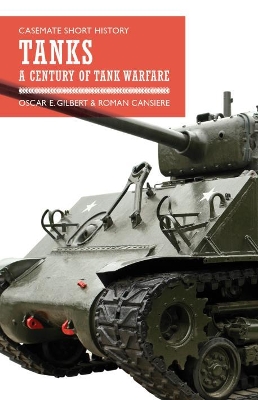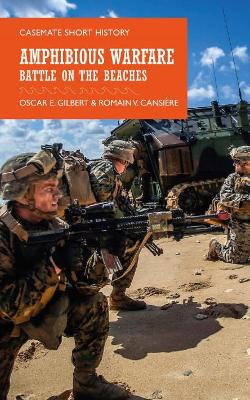Casemate Short History
2 total works
Today tanks are synonymous with the modern army; imposing, essential pieces of high-technology equipment, seemingly impregnable. But how did the tank come into being, and how did it develop and influence conflict in the 20th and 21st centuries? Why do different countries use tanks so differently in combat and what was the biggest tank-on-tank battle?
The Casemate Short History of Tanks addresses all these questions and more in an informative and entertaining introduction to this iconic weapon of the last hundred years.
Tanks first ventured into battle on the Somme in 1916, and by the end of the war countries were beginning to choose “heavy” or “light” tank designs to suit their preferred doctrine. Design stagnated between the wars, until World War II brought about rapid change. Tanks would prove integral to fighting in almost every theatre; the Germans swept across Europe using tanks to spearhead their blitzkrieg method of war, until Soviet tanks proved more than their match and led to some epic tank battles on a huge scale.
After World War II, tank designs became increasingly sophisticated, and armor undertook a variety of roles in conflicts, with mixed results. American armor in Korea was soon forced into an infantry support role, which it reprised in Vietnam, while Soviet armor was defeated in guerrilla warfare in Afghanistan. However, tanks played a pivotal role in the American “shock and awe” doctrine in two wars in Iraq, and tanks remain a crucial weapons system on the battlefield.
The Casemate Short History of Tanks addresses all these questions and more in an informative and entertaining introduction to this iconic weapon of the last hundred years.
Tanks first ventured into battle on the Somme in 1916, and by the end of the war countries were beginning to choose “heavy” or “light” tank designs to suit their preferred doctrine. Design stagnated between the wars, until World War II brought about rapid change. Tanks would prove integral to fighting in almost every theatre; the Germans swept across Europe using tanks to spearhead their blitzkrieg method of war, until Soviet tanks proved more than their match and led to some epic tank battles on a huge scale.
After World War II, tank designs became increasingly sophisticated, and armor undertook a variety of roles in conflicts, with mixed results. American armor in Korea was soon forced into an infantry support role, which it reprised in Vietnam, while Soviet armor was defeated in guerrilla warfare in Afghanistan. However, tanks played a pivotal role in the American “shock and awe” doctrine in two wars in Iraq, and tanks remain a crucial weapons system on the battlefield.
One of the most difficult types of warfare to master, landing on a hostile beach requires scrupulous planning and intense coordination between the forces in the air, sea and land.
With a history reaching back to the Persians landing on the Greek shores at the Battle of Marathon in 490 BC, it was the First World War that marked the beginning of modern amphibious warfare, with the Royal Marines combining their efforts with the Royal Navy. Despite the disastrous Gallipoli amphibious operation to seize the Dardanelles Straits in 1915, the Royal Navy and US Marine Corps continued to develop new landing crafts throughout the inter-war years. The Second World War proved more successful for amphibious warfare, with the Japanese invasion of the Philippines in 1941 crushing the American forces who were defending the Pacific islands and the D-day landings by the Allied troops in 1944 initiating the beginning of the end of the war in Europe.
This accessible short history looks at the historical development of amphibious warfare, telling the stories of particular landings, and the units that have taken part in this unique type of warfare. The Royal Marines and US Marine Corps continue to evolve and play a crucial role in defence today, with specialised amphibious warfare ships being deployed to enable elite forces to respond promptly to threats across the globe.
With a history reaching back to the Persians landing on the Greek shores at the Battle of Marathon in 490 BC, it was the First World War that marked the beginning of modern amphibious warfare, with the Royal Marines combining their efforts with the Royal Navy. Despite the disastrous Gallipoli amphibious operation to seize the Dardanelles Straits in 1915, the Royal Navy and US Marine Corps continued to develop new landing crafts throughout the inter-war years. The Second World War proved more successful for amphibious warfare, with the Japanese invasion of the Philippines in 1941 crushing the American forces who were defending the Pacific islands and the D-day landings by the Allied troops in 1944 initiating the beginning of the end of the war in Europe.
This accessible short history looks at the historical development of amphibious warfare, telling the stories of particular landings, and the units that have taken part in this unique type of warfare. The Royal Marines and US Marine Corps continue to evolve and play a crucial role in defence today, with specialised amphibious warfare ships being deployed to enable elite forces to respond promptly to threats across the globe.

